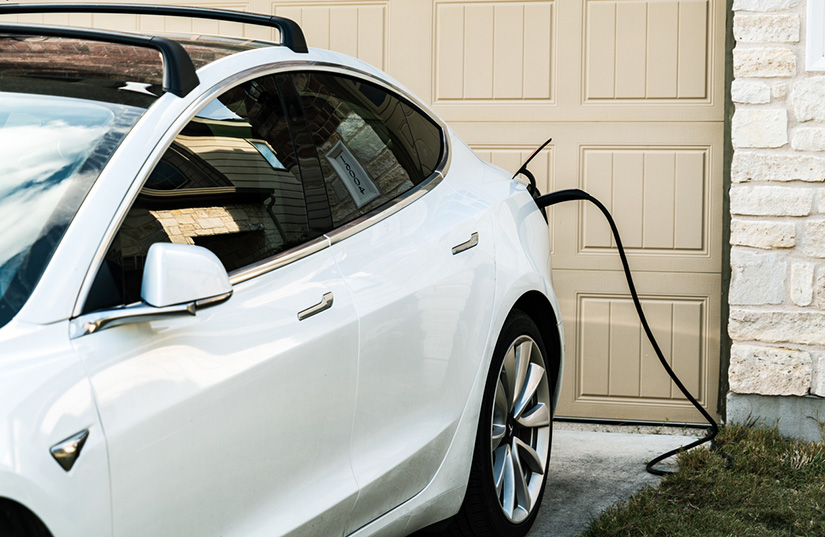Rural electric co-ops lend money to customers to improve energy efficiency
Rural electric co-ops lend money to customers to improve energy efficiency pv magazine USA


Reducing Building Energy Usage for a Sustainable Future

A recent study conducted by the National Renewable Energy Laboratory (NREL) has highlighted the importance of reducing building energy usage in achieving a least-cost 100% renewable grid. This finding aligns with the Sustainable Development Goals (SDGs) aimed at promoting sustainable energy practices.
Empowering Rural Electric Co-op Customers through Energy Efficiency Loans
In addition to contributing to a sustainable future, residential energy efficiency gains have the potential to save money and improve comfort for consumers. This motivates customers of rural electric cooperatives to seek loans from their co-ops to finance energy efficiency improvements. The loan amount is then repaid through the customer’s utility bill.
Midwest Energy, a co-op serving central and western Kansas, has witnessed 2,475 of its customers, accounting for 8% of its customer base, taking advantage of these loans. This demonstrates the growing interest and demand for energy efficiency initiatives among consumers.
The Benefits of Inclusive Utility Investments
Rural Americans often face higher energy costs compared to their urban counterparts, spending up to 40% more on energy. To address this issue, the Rural Power Coalition recommends the loan approach to help co-op customers save money and build resilience to extreme weather events. This inclusive utility investment approach focuses on assessing the energy savings potential of buildings rather than customers’ financial liquidity or creditworthiness.
How Energy Efficiency Loans Work
To initiate an energy efficiency loan, customers can choose from a range of cost-effective upgrades for their homes, farms, or businesses. These upgrades may include insulation, air sealing, efficient HVAC equipment, on-site solar installations, or electric vehicle chargers. The utility provides the necessary funds for these upgrades through a loan, which the customer repays through a monthly charge. Importantly, this monthly charge is lower than the estimated savings from the upgrade.
In the event that a customer moves before fully repaying the loan, the monthly charge is transferred to future customers at that location. This ensures the continuity of the loan repayment process and encourages more customers to participate in energy efficiency programs.
Government Support and Case Studies
Electric co-ops and other rural utilities can access 0% financing for energy efficiency investments through the Rural Energy Savings Program operated by the U.S. Department of Agriculture. The interest rate charged to customers is capped at 5% and is often lower, making it an attractive option for consumers.
The Rural Power Coalition presents two case studies to illustrate the positive impact of inclusive utility investments. The Roanoke Electric Cooperative in North Carolina has successfully enrolled over 10% of its residential customers in energy efficiency financing. In southern Arkansas, the Ouachita Electric Cooperative has observed significant demand reductions among residential customers who have borrowed for weatherization and HVAC upgrades, with even greater reductions for those who also install solar panels. These projects have led to an average reduction in peak demand of 1.5 to 2 kW for each upgraded home, allowing the co-op utility to reduce rates for residential customers by 4.5%.
Advancing Clean Energy Investments in Rural America
The Rural Power Coalition, a collaboration of 17 organizations, is dedicated to promoting clean energy investments by rural electric cooperatives in 14 states. By encouraging energy efficiency loans and inclusive utility investments, they aim to support the achievement of the SDGs and create a sustainable future for all.
SDGs, Targets, and Indicators
-
SDG 7: Affordable and Clean Energy
- Target 7.3: By 2030, double the global rate of improvement in energy efficiency
- Indicator 7.3.1: Energy intensity measured in terms of primary energy and GDP
-
SDG 11: Sustainable Cities and Communities
- Target 11.6: By 2030, reduce the adverse per capita environmental impact of cities, including by paying special attention to air quality and municipal and other waste management
- Indicator 11.6.1: Proportion of urban solid waste regularly collected and with adequate final discharge out of total urban solid waste generated, by cities
Analysis
The article addresses the issue of reducing building energy usage and improving energy efficiency, which is connected to SDG 7: Affordable and Clean Energy. The article highlights the study by the National Renewable Energy Laboratory, which emphasizes the importance of energy efficiency in achieving a least-cost 100% renewable grid.
Specific targets under SDG 7 that can be identified based on the article’s content include Target 7.3: By 2030, double the global rate of improvement in energy efficiency. The article discusses how residential energy efficiency gains save money and improve comfort, motivating customers to invest in energy efficiency improvements.
The article also mentions indicators that can be used to measure progress towards the identified targets. Indicator 7.3.1: Energy intensity measured in terms of primary energy and GDP can be used to assess the rate of improvement in energy efficiency.
In addition, the article touches on the issue of reducing the adverse per capita environmental impact of cities, which is connected to SDG 11: Sustainable Cities and Communities. The article mentions that energy efficiency improvements can help co-op utilities build resilience to extreme weather events, contributing to a more sustainable and resilient urban environment.
Specific targets under SDG 11 that can be identified based on the article’s content include Target 11.6: By 2030, reduce the adverse per capita environmental impact of cities, including by paying special attention to air quality and municipal and other waste management. The article highlights how energy efficiency improvements can help reduce the environmental impact of buildings and contribute to better waste management.
The article does not explicitly mention indicators related to SDG 11, but Indicator 11.6.1: Proportion of urban solid waste regularly collected and with adequate final discharge out of total urban solid waste generated, by cities can be relevant in assessing the impact of energy efficiency improvements on waste management.
SDGs, Targets, and Indicators
| SDGs | Targets | Indicators |
|---|---|---|
| SDG 7: Affordable and Clean Energy | Target 7.3: By 2030, double the global rate of improvement in energy efficiency | Indicator 7.3.1: Energy intensity measured in terms of primary energy and GDP |
| SDG 11: Sustainable Cities and Communities | Target 11.6: By 2030, reduce the adverse per capita environmental impact of cities, including by paying special attention to air quality and municipal and other waste management | Indicator 11.6.1: Proportion of urban solid waste regularly collected and with adequate final discharge out of total urban solid waste generated, by cities |
Behold! This splendid article springs forth from the wellspring of knowledge, shaped by a wondrous proprietary AI technology that delved into a vast ocean of data, illuminating the path towards the Sustainable Development Goals. Remember that all rights are reserved by SDG Investors LLC, empowering us to champion progress together.
Source: pv-magazine-usa.com

Join us, as fellow seekers of change, on a transformative journey at https://sdgtalks.ai/welcome, where you can become a member and actively contribute to shaping a brighter future.







